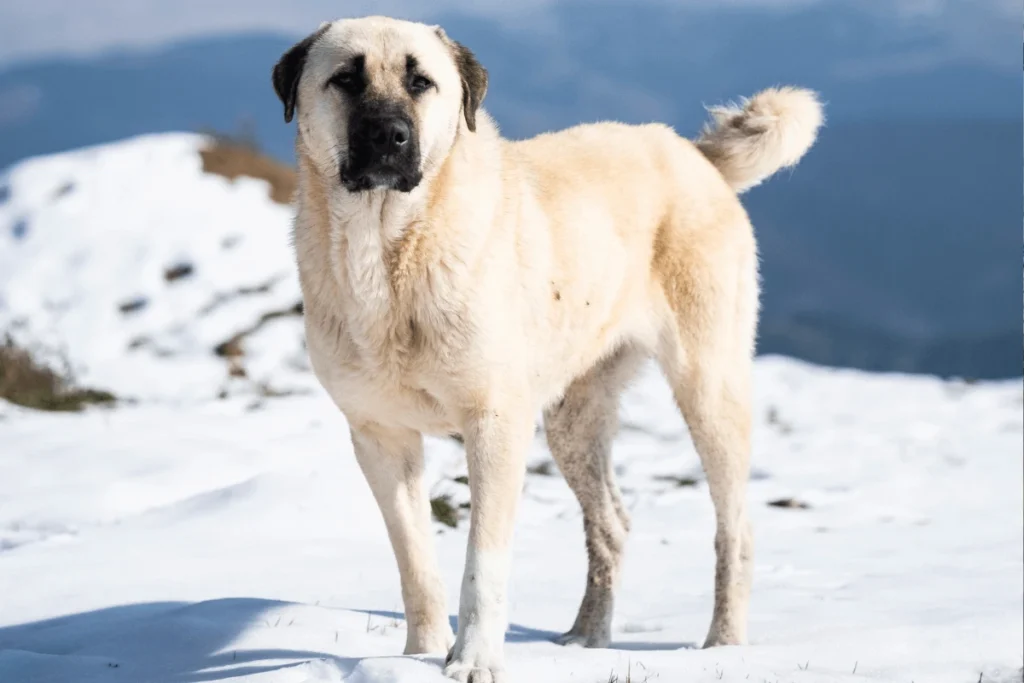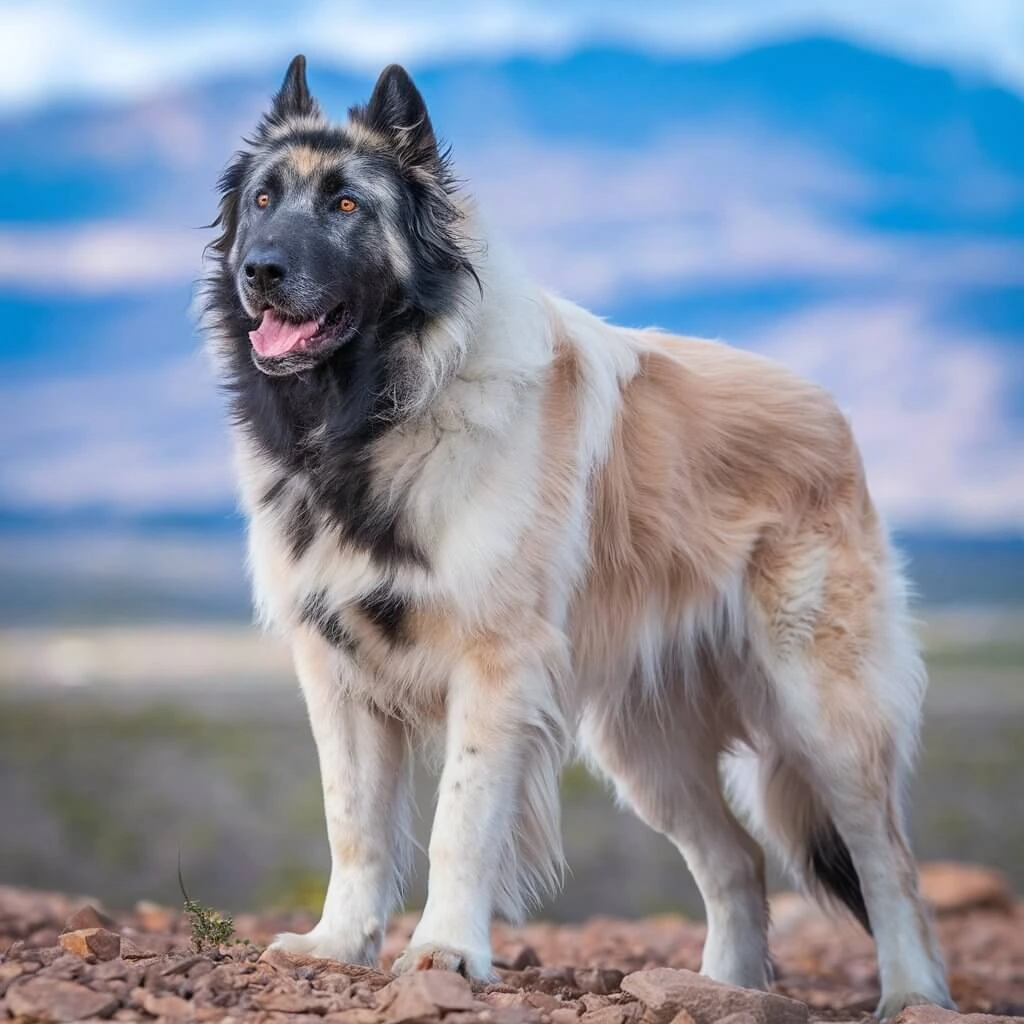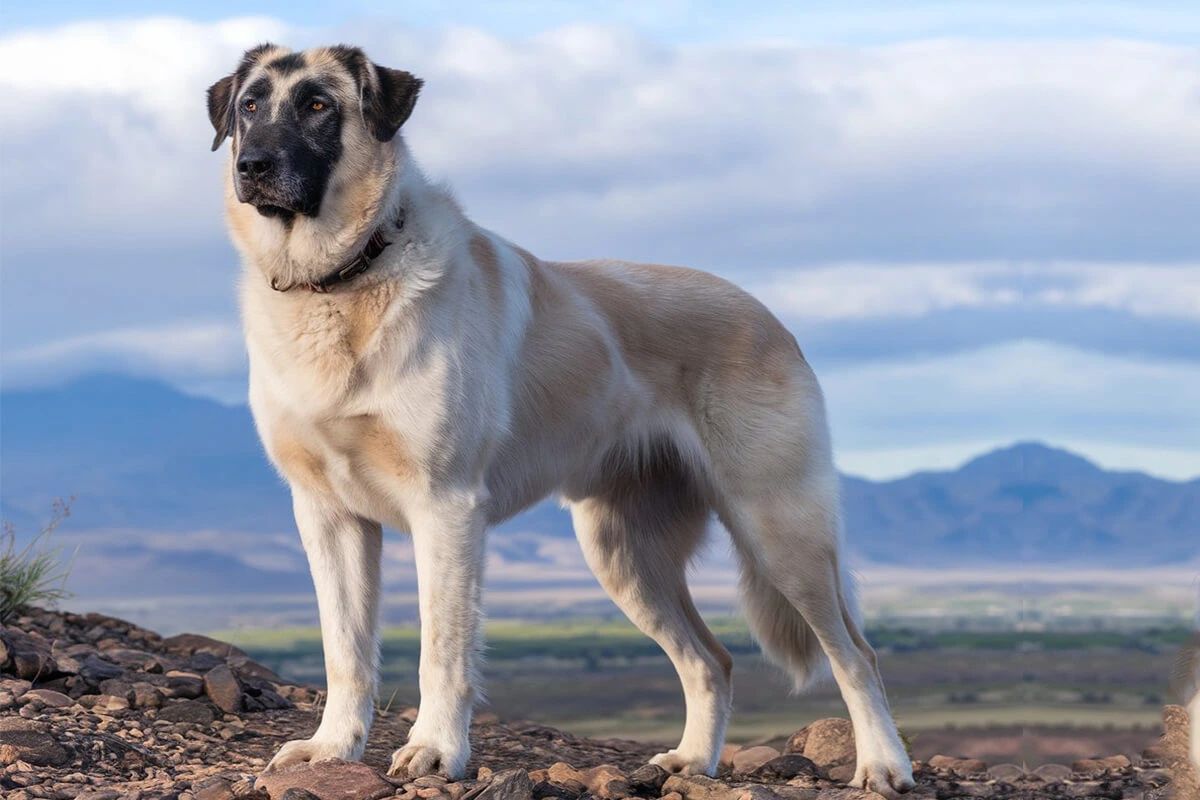Anatolian Shepherd Intelligence sets this breed apart as one of the most capable working dogs in the world. Originally bred in Turkey, Anatolian Shepherds developed their intelligence through centuries of protecting livestock from predators. Their ability to assess threats, make independent decisions, and respond quickly without constant human direction makes them highly effective guardians. Unlike some breeds that rely on obedience-based intelligence, Anatolian Shepherds excel in problem-solving and self-reliance.
Understanding their intelligence requires looking beyond traditional measures like trainability and command-following. These dogs think for themselves, weighing situations carefully before taking action. Their protective nature, loyalty, and independence shape their decision-making process. This blog post explores ten fascinating insights into Anatolian Shepherd intelligence, including their problem-solving skills, trainability, and how they compare to other smart dog breeds. Whether you own an Anatolian Shepherd or want to learn more about their unique traits, this guide will give you a deeper appreciation for their remarkable minds.
Understanding Anatolian Shepherd Intelligence
Definition of Intelligence in Working and Guardian Dogs
Dog intelligence comes in different forms, and working dogs like the Anatolian Shepherd display intelligence in ways that set them apart from typical obedience-trained breeds. Experts often categorize canine intelligence into three main types: instinctive intelligence, adaptive intelligence, and obedience intelligence.
- Instinctive Intelligence: This refers to the natural abilities a breed inherits. Anatolian Shepherds excel in instinctive intelligence because they have spent centuries protecting livestock without needing direct human commands. Their ability to guard flocks, assess threats, and respond appropriately showcases this type of intelligence.
- Adaptive Intelligence: Dogs with high adaptive intelligence can learn from past experiences and adjust their behavior accordingly. Anatolian Shepherds demonstrate this when they analyze their surroundings and solve problems without human guidance. For example, if a predator repeatedly attempts to breach a fence, an Anatolian Shepherd will adjust its patrol pattern or find a strategic vantage point to deter the threat.
- Obedience Intelligence: This measures how quickly a dog learns and follows human commands. Breeds like Border Collies and German Shepherds rank high in obedience intelligence because they respond quickly to structured training. Anatolian Shepherds, however, score lower in this category—not because they lack intelligence, but because their independence makes them less inclined to obey commands without assessing the situation first.
How Anatolian Shepherds Compare to Other Intelligent Breeds
People often assume that the smartest dog breeds are those that quickly learn tricks and commands, but intelligence varies based on a dog’s purpose. Anatolian Shepherds use intelligence differently than breeds like Border Collies, Poodles, or Golden Retrievers.
- Border Collies rank as the most intelligent breed in terms of obedience and problem-solving, but they rely on human direction for tasks like herding. Anatolian Shepherds, in contrast, work autonomously, making decisions without needing guidance.
- German Shepherds balance obedience and independent thinking, making them excellent police and military dogs. However, they still seek human direction more than Anatolian Shepherds do.
- Livestock guardian breeds like the Great Pyrenees and Kangal share many traits with Anatolian Shepherds, particularly in their ability to assess threats and protect livestock without constant supervision.
Unlike traditional obedience-driven breeds, Anatolian Shepherds do not aim to please their owners by following commands immediately. Instead, they evaluate whether a command makes sense in a given situation. If a threat exists, they may ignore an owner’s recall command because their priority is protection.
The Role of Independent Thinking in Their Intelligence
Independent thinking defines Anatolian Shepherd intelligence. These dogs do not rely on human instructions to perform their duties, which makes them highly valuable as livestock guardians. When left alone in open fields with sheep or goats, they determine when and how to act based on their own judgment.
This level of self-sufficiency comes from their long history of guarding livestock in Turkey. Farmers bred them to work in remote areas where human supervision was minimal. They learned to recognize threats, distinguish between actual danger and harmless situations, and respond accordingly.
Anatolian Shepherds also display selective obedience, meaning they will follow commands only when they deem them necessary. If they sense a predator nearby, they might refuse to return to their owner’s side because they prioritize protecting their territory. This trait makes them different from breeds bred for close human cooperation, like retrievers or herding dogs.
While independent thinking can pose challenges in training, it highlights their intelligence in real-world situations. Owners who understand and respect this trait can build a strong relationship with their Anatolian Shepherd by using training methods that foster trust rather than relying on strict obedience-based techniques.
Problem-Solving Skills and Decision-Making
How Anatolian Shepherds Assess Threats and React
Anatolian Shepherds do not rely on human cues to identify danger. Instead, they assess threats by analyzing their surroundings, observing body language, and detecting subtle changes in their environment. Their intelligence allows them to distinguish between real threats and harmless disturbances, ensuring they do not waste energy on unnecessary confrontations.

These dogs use several key strategies when assessing danger:
- Situational Awareness: Anatolian Shepherds constantly scan their territory. They recognize patterns in their environment, such as where livestock usually graze or which areas predators might target. When something appears out of place, they immediately go on high alert.
- Threat Prioritization: Unlike some breeds that react aggressively to any unfamiliar presence, Anatolian Shepherds evaluate whether an approaching person or animal poses an actual risk. If a predator lingers too long or displays threatening behavior, they will escalate their response.
- Controlled Responses: Instead of attacking impulsively, these dogs often rely on intimidation tactics first. They will position themselves between the threat and their flock, use deep warning barks, or stand their ground. If these signals do not deter the threat, they will engage physically.
Their ability to assess threats makes them exceptional livestock guardians. They do not attack without reason, which helps protect both their flock and innocent bystanders.
Real-Life Examples of Their Problem-Solving Abilities
Anatolian Shepherds frequently showcase their intelligence by adapting to new challenges and solving problems without human intervention.
- Defending Against Predators: Many farmers report cases where Anatolian Shepherds adjust their guarding strategies based on predator behavior. If a coyote or wolf changes its approach to avoid detection, the dog will modify its patrol route, ensuring there are no blind spots in the territory.
- Navigating Obstacles: Some Anatolian Shepherds figure out how to open gates or manipulate latches to reach their livestock. If they are separated from their flock, they will test different methods until they find a way back.
- Protecting Vulnerable Animals: In multi-species farms, Anatolian Shepherds often recognize weaker or injured animals and stay close to them. If a newborn lamb struggles to keep up with the herd, the dog may slow its pace to ensure the lamb stays protected.
These examples highlight their ability to think critically and adapt to situations, making them invaluable working dogs.
Differences Between Obedience-Based Intelligence and Independent Intelligence
Many people assume that highly obedient dogs are the smartest, but intelligence manifests in different ways. Anatolian Shepherds excel in independent intelligence rather than obedience-based intelligence.
- Obedience-Based Intelligence: Breeds like Border Collies and German Shepherds rank high in obedience intelligence because they follow commands quickly and learn complex tasks with ease. They thrive in structured environments where human direction plays a crucial role.
- Independent Intelligence: Anatolian Shepherds prioritize decision-making over immediate compliance. They assess commands instead of blindly obeying them. If an owner calls them back while they are facing a potential threat, they may choose to ignore the command because their primary role is protection, not obedience.
This distinction explains why Anatolian Shepherds sometimes frustrate first-time owners who expect them to behave like traditional working dogs. However, their independent intelligence makes them highly reliable in real-world situations where human supervision is limited.
By understanding these differences, owners can appreciate the true brilliance of Anatolian Shepherd intelligence and work with their natural instincts rather than against them.
Trainability of Anatolian Shepherds: Challenges and Strategies
The Independent Nature of the Breed and How It Affects Trainability
Anatolian Shepherds have a strong-willed and independent nature, which comes from centuries of working as livestock guardians in remote areas. Unlike breeds bred for obedience, Anatolian Shepherds do not instinctively seek human approval. They think for themselves, making decisions based on the situation rather than simply following orders.
This independence affects trainability in several ways:
- Delayed Response to Commands: Anatolian Shepherds do not rush to obey commands without assessing the necessity of the action. If they see no logical reason to sit or come when called, they may ignore the command.
- Selective Obedience: They choose when to listen, especially if they perceive their duty as a guardian to be more important than a given command. If an owner calls them inside, but they detect an unfamiliar presence near the property, they may refuse to leave their post.
- Repetition Avoidance: Unlike breeds that enjoy repetitive training drills, Anatolian Shepherds lose interest quickly if they see no purpose in the exercise. Trainers must keep sessions engaging and relevant to real-world tasks.
Understanding their independent mindset helps trainers and owners approach training with the right expectations. Instead of trying to enforce strict obedience, successful training builds mutual trust and cooperation.
Best Training Methods for Anatolian Shepherds
Training an Anatolian Shepherd requires patience, consistency, and an understanding of their natural instincts. The best training methods respect their intelligence while reinforcing desired behaviors.
- Start Early and Be Consistent: Early socialization and training create a foundation for good behavior. Puppies need exposure to various environments, people, and animals to develop confidence and controlled responses to new situations.
- Use Positive Reinforcement: Rewards such as treats, praise, and affection work better than punishment-based methods. Since Anatolian Shepherds do not respond well to harsh corrections, positive reinforcement builds trust and encourages cooperation.
- Establish Leadership Without Force: These dogs respect confident and calm leadership. Owners should set firm boundaries while avoiding dominance-based training techniques that may cause them to resist or shut down.
- Train With a Purpose: Anatolian Shepherds respond well to training that aligns with their guardian instincts. Instead of repetitive tricks, introduce exercises that enhance their guarding skills, such as boundary training, recall under distractions, and controlled introductions to new people or animals.
- Practice Patience: Progress may seem slow compared to obedience-driven breeds, but patience leads to long-term success. Consistency over time helps Anatolian Shepherds learn expectations without feeling pressured.
Common Mistakes to Avoid When Training This Breed
Many owners struggle with training Anatolian Shepherds because they approach them the same way they would train a Labrador Retriever or German Shepherd. Recognizing common mistakes helps prevent frustration and ensures a more effective training experience.
- Expecting Instant Obedience: Anatolian Shepherds will not respond immediately to commands without evaluating the situation. Owners must understand that hesitation does not mean disobedience—it reflects their natural decision-making process.
- Using Harsh Corrections: Strong-willed and intelligent, these dogs do not respond well to forceful training methods. Harsh corrections can cause them to become stubborn or distrustful.
- Skipping Early Socialization: If not socialized properly, Anatolian Shepherds may develop excessive wariness or aggression toward strangers and other animals. Early exposure to different environments helps them develop balanced behavior.
- Not Setting Boundaries: Owners who allow bad habits in puppyhood, such as jumping, excessive barking, or ignoring commands, will struggle to correct these behaviors in an adult dog. Early training should set clear expectations.
- Failing to Provide Mental Stimulation: Because Anatolian Shepherds use intelligence in problem-solving, they need mental challenges. Without stimulation, they may become bored and engage in unwanted behaviors like digging or escaping.
By avoiding these mistakes and understanding their independent nature, owners can build a strong relationship with their Anatolian Shepherd while guiding them toward well-mannered behavior.
Guardian Instincts and Herd Protection Abilities
The Breed’s Natural Instincts for Livestock and Family Protection
Anatolian Shepherd intelligence plays a crucial role in their ability to protect livestock and families. Bred for centuries in Turkey as livestock guardians, these dogs rely on instinct and critical thinking rather than human direction. Their intelligence allows them to assess situations, determine the level of threat, and take appropriate action without needing commands.

When guarding livestock, Anatolian Shepherds position themselves strategically to monitor their territory. They do not randomly patrol; instead, they choose vantage points that allow them to detect movement and potential dangers. If they sense a predator, they will not immediately attack. Instead, they will issue a series of warnings, including deep barking, posturing, and controlled movements designed to intimidate intruders.
Their intelligence also extends to family protection. Anatolian Shepherds form strong bonds with their owners and naturally extend their guarding instincts to household members. They observe patterns in daily life, quickly recognizing unusual behavior from visitors or strangers. If they perceive a potential threat, they will place themselves between their family and the source of danger, using body blocking as a first line of defense. Unlike traditional guard dogs trained for protection, Anatolian Shepherds decide on their own when to act, making them reliable in unpredictable situations.
How Intelligence Enhances Their Guarding Effectiveness
Anatolian Shepherd intelligence goes beyond obedience training. These dogs excel in real-world decision-making, making them highly effective guardians.
- Threat Assessment: Anatolian Shepherds do not react impulsively. They analyze body language, scent, and movement before determining whether an animal or person poses a risk. This ability prevents unnecessary aggression and ensures they do not overreact to non-threatening situations.
- Adaptive Strategies: Unlike breeds that rely on repetitive commands, Anatolian Shepherds adjust their guarding techniques based on the situation. If a predator repeatedly approaches from the same direction, they may change their patrol routes or create a stronger presence in that area.
- Independent Decision-Making: Many guard dogs wait for commands before engaging, but Anatolian Shepherds act based on their judgment. This intelligence makes them ideal for protecting large rural properties where human supervision may be minimal.
- Protective Yet Controlled Behavior: While Anatolian Shepherds defend their territory with confidence, they do not show unnecessary aggression. Their intelligence helps them differentiate between a true threat and an unfamiliar but harmless presence.
Because they rely on intelligence rather than brute force, Anatolian Shepherds can protect livestock and families with minimal intervention. Their instincts, combined with their problem-solving skills, make them one of the most capable guardian breeds.
Comparison with Other Livestock Guardian Breeds Like the Kangal and Great Pyrenees
Anatolian Shepherd intelligence sets them apart from other livestock guardian breeds, but they share key traits with similar breeds like the Kangal and Great Pyrenees.
- Kangal Shepherd:
The Kangal, another Turkish livestock guardian breed, closely resembles the Anatolian Shepherd in intelligence and instincts. Kangals tend to be slightly more aggressive toward predators, while Anatolian Shepherds focus more on deterrence and strategic guarding. Both breeds exhibit strong independent thinking and do not require human supervision to protect their territory. - Great Pyrenees:
The Great Pyrenees, known for its calm and gentle temperament, shares the Anatolian Shepherd’s natural guardian instincts. However, Great Pyrenees dogs tend to be more passive in their guarding approach, relying on barking and intimidation rather than direct confrontation. Anatolian Shepherds, by contrast, use calculated strategies and will take physical action if necessary. - Akbash:
The Akbash, another Turkish guardian breed, has a temperament similar to the Anatolian Shepherd but often displays a more reserved nature. Akbash dogs may bond more closely with livestock, whereas Anatolian Shepherds balance livestock protection with family guarding responsibilities.
Among livestock guardian breeds, Anatolian Shepherds stand out for their ability to balance intelligence, independence, and adaptability. While other breeds excel in specific areas, Anatolian Shepherd intelligence allows them to adjust their strategies based on their environment, making them one of the most versatile guardian breeds in the world.
Where Do Anatolian Shepherds Rank Among Smartest Dog Breeds?
How Intelligence Rankings Are Determined in Dogs
Dog intelligence rankings often come from studies that focus primarily on obedience and trainability. The most well-known ranking system, created by canine psychologist Dr. Stanley Coren, evaluates intelligence based on how quickly a breed learns new commands and how consistently it follows them. This system classifies intelligence into three main categories:
- Obedience Intelligence: Measures how fast a dog learns commands and how well it obeys them. Breeds like Border Collies and Poodles rank high because they respond quickly to structured training.
- Adaptive Intelligence: Refers to a dog’s ability to solve problems and learn from experience. Breeds with high adaptive intelligence, like Anatolian Shepherds, can assess situations and respond appropriately without human guidance.
- Instinctive Intelligence: Relates to a breed’s natural abilities, such as herding, guarding, or retrieving. Anatolian Shepherds rank high in instinctive intelligence because they excel at livestock protection without needing human instruction.
Most intelligence rankings prioritize obedience-based intelligence, which favors dogs that excel in formal training environments. This approach often underestimates breeds like the Anatolian Shepherd, whose intelligence does not revolve around command-following but rather independent problem-solving and decision-making.

Why Anatolian Shepherds May Not Score High in Obedience Tests but Excel in Real-World Intelligence
Anatolian Shepherds approach intelligence differently from breeds bred for obedience. They do not blindly follow orders; instead, they evaluate whether a command aligns with their instincts and responsibilities.
- Independent Decision-Making: Unlike dogs that wait for human direction, Anatolian Shepherds assess situations on their own. If they sense a threat, they will act accordingly, even if it means ignoring a command.
- Task-Oriented Intelligence: These dogs excel at livestock protection, adapting their guarding methods based on the behavior of predators. If a predator repeatedly targets a specific area, an Anatolian Shepherd will adjust its patrol pattern without human intervention.
- Selective Obedience: Because their primary role is protection, Anatolian Shepherds do not respond to commands unless they see a valid reason. While a Labrador Retriever may immediately sit when commanded, an Anatolian Shepherd may hesitate, evaluating whether the situation requires a different response.
In real-world applications, this intelligence proves invaluable. Farmers rely on Anatolian Shepherds to protect livestock without needing constant supervision. Families trust them to make judgment calls when guarding property. These abilities showcase a form of intelligence that obedience tests fail to measure.
What AKC and FCI Say About Their Intelligence and Working Abilities
Both the American Kennel Club (AKC) and the Fédération Cynologique Internationale (FCI) recognize Anatolian Shepherds as highly capable working dogs with exceptional guarding instincts.
- AKC Description:
The AKC classifies the Anatolian Shepherd as a livestock guardian dog known for its intelligence, independence, and protective nature. The breed standard highlights its ability to make decisions without human input, emphasizing its self-reliant work ethic. The AKC acknowledges that while Anatolian Shepherds may not rank high in obedience-based intelligence tests, they excel in practical working environments where problem-solving and adaptability matter most. - FCI Recognition:
The FCI, which oversees international breed standards, describes the Anatolian Shepherd as an intelligent and independent breed developed for livestock protection. According to the FCI, Anatolian Shepherds possess strong protective instincts and excel at guarding without direct human guidance. Their intelligence allows them to recognize threats, assess risks, and respond appropriately to protect their territory.
Both organizations emphasize that Anatolian Shepherd intelligence lies in their working ability rather than obedience. Their intelligence manifests in their ability to guard flocks, protect homes, and make independent decisions—skills that cannot be measured by traditional obedience rankings.
Conclusion
Anatolian Shepherd intelligence goes far beyond traditional obedience rankings. These dogs excel not because they follow commands instantly but because they think critically and make independent decisions. Their intelligence allows them to assess threats, adapt their guarding strategies, and protect both livestock and families without constant human guidance. Unlike breeds that thrive on repetitive training, Anatolian Shepherds prioritize situational awareness and problem-solving, making them some of the most capable working dogs in the world.
Their ability to distinguish between real dangers and harmless disturbances sets them apart as guardians. They do not attack recklessly or bark excessively; instead, they analyze situations and choose the most effective response. This intelligence makes them reliable protectors in both rural and home settings. While they may frustrate owners who expect instant obedience, those who understand their independent nature appreciate their loyalty, dedication, and problem-solving abilities.
Comparing Anatolian Shepherds to other livestock guardian breeds, such as the Kangal and Great Pyrenees, highlights their unique balance of intelligence, independence, and adaptability. They think strategically, adjusting their methods based on their environment and the challenges they face. Their intelligence ensures they remain effective guardians without needing direct supervision, a trait that has made them invaluable for centuries.
Both the American Kennel Club (AKC) and the Fédération Cynologique Internationale (FCI) recognize Anatolian Shepherds as highly intelligent and capable working dogs. Their intelligence may not shine in obedience-based tests, but in real-world situations, they prove their worth through independent decision-making and unwavering dedication to their role.
For those seeking a loyal, intelligent, and self-sufficient guardian, the Anatolian Shepherd stands as one of the smartest and most reliable breeds. Their intelligence is not about obedience—it’s about understanding, problem-solving, and making the right decisions when it matters most.
Learn More About The Anatolian Shepherd Breed Here.
Find Out The Difference Between The Anatolian Shepherd vs Kangal Dogs Here.
To Learn more about Dogs and breeds, you can check This.
Find Some Amazing stuff for your Dog On Pet MD Official.
